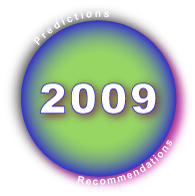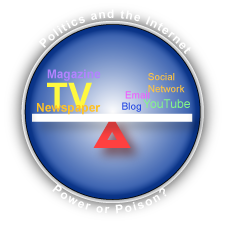These three examples showed how digitally produced social information could change entrenched human problems like war, excessive punishment and imprisonment and mass death by natural disaster. As such, they serve as examples of widespread change that will occur thanks to social networks and work processes. […]
|
|||||
|
May 16th, 2010 | Tags: Collaboration, Crowdsourcing, Culture, Development, Empowerment, Globalization, Government, High tech, Higher education, Human capital, I.T., Innovation, Internet, Knowledge Economy, Politics, Social network, Telecom, Transform | Category: Nonprofit & NGO, Social Business, Society & Culture | Leave a comment In the knowledge economy, people are motivated by greater autonomy, mastery, and purpose—not by carrots or sticks.. connectivity is second only to a water pump in its significance to a village.. It will not be enough, as it was back in the early Web, to just leave a website lying around to be found. Business has to become a travelling exhibit, a movable market stall that can be adjusted and placed wherever people are or want to be.. Marketers have begun to view social networks as a significant marketing contact point (and perhaps even more important than traditional channels) for procuring consumer data and knowledge.. people are diving into the Web 2.0 and 3.0 pools before they even know with whom they are swimming.. In 2010 we will see more public agencies taking risks to engage in this sort of “flat” information sharing and insight gathering.. sociology will rapidly become the new economics. […] February 7th, 2010 | Tags: Adoption, Career, CEO, CMO, Collaboration, Crowdsourcing, Culture, Disruption, Economics, Empowerment, Enterprise 2.0, Environment, Experience, Facebook, Gaming, Globalization, Human capital, India, Internet, Knowledge Economy, LinkedIn, Marketing, Media, Mobile, Prediction, Review, Social network, Strategy, Technology, Transform | Category: Social Business | 4 comments Review and Analysis of the twenty-first century’s first decade, how Web 1.0 and Web 2.0 are disrupting executives, enterprises, society and government.. crowdsourcing, collaboration, innovation, privacy, globalization, terrorism, organizational unbundling, and how to thrive in the Knowledge Economy’s accelerating volatility, which will spell the end of many Industrial Economy enterprises. […] January 2nd, 2010 | Tags: Adoption, CEO, China, CIO CTO, CMO, Collaboration, Crowdsourcing, Culture, Economics, Empowerment, Enterprise 2.0, Experience, Globalization, Government, Human capital, India, Innovation, Internet, Knowledge Economy, Management, Marketing, Outsourcing ITO BPO KPO, Politics, Prediction, Privacy, Review, Social network, Strategy, Technology, Transform, Web 1.0, Year in Review | Category: Social Business | One comment This Web 2.0 adoption curve helps commercial and government executives make investments in social networks, social media and Web 2.0 in 2009 and 2010: use this realistic adoption model to manage expectations and risk. […] April 4th, 2009 | Tags: Adoption, CMO, Culture, Enterprise 2.0, Innovation, Internet, Strategy, Transform, Web 1.0, Web 2.0 | Category: Social Business | 5 comments Please Pardon the Dust and Stray Nails The Global Human Capital Journal has just migrated from the open source Serendipity CMS to WordPress and into a new hosting space. Unfortunately, we’ve experienced a few broken toes, bruised fingers and tooo much caffeine during the process, but we’re getting there! Read on for a blow-by-blow account on the migration thus far and where we’re going. […] Twitter and Facebook Top of Mind | #snc2009 | Awaiting Discovery: The Nascent Power of Weak Ties and Small Touches
Social Networking Watch’s Mark Brooks gave an overview of key trends, while jetBlue’s Morgan Johnston and IBM’s Adam Christensen drove home the message that companies could be rewarded for trusting their customers in social networks. Ford’s Scott Monty, Sun’s Lou Ordorica and Microsoft’s Marty Collins shared how they were […] January 27th, 2009 | Tags: Adoption, Case study, CEO, CIO CTO, CMO, Collaboration, Culture, Empowerment, Enterprise 2.0, Experience, Healthcare, Higher education, Human capital, Innovation, Internet, Knowledge Economy, Management, Marketing, Mobile, SNC, Strategy, Technology, Transform, Web 2.0 | Category: Healthcare, Social Business | One comment Volatility, Uncertainly and Opportunity—Move Crisply while Competitors Are in Disarray
This is a high-stakes year in which we can expect surprises. Web 2.0 and social networks can help because they increase flexibility and adaptiveness. Alas, those who succeed will have to challenge conventional thinking considerably, which is not a trivial exercise in normal times. The volatility that many businesses face will make it more difficult because many of their clients and/or employees will be distracted. It will also make it easier because some of them will perceive that extensive change is afoot, and Web 2.0 will blend in with the cacaphony. Disruption produces unusual changes in markets, and the people that perceive the new patterns and react appropriately emerge as new leaders. […] January 2nd, 2009 | Tags: Adoption, CEO, CIO CTO, CMO, Economics, Empowerment, Enterprise 2.0, Globalization, Government, Healthcare, Human capital, India, Innovation, Internet, Knowledge Economy, Management, Marketing, Politics, Prediction, Review, Strategy, Technology, Transform, Web 1.0 | Category: Social Business | 4 comments Editor’s Choice of the Global Human Capital Journal—Accelerating Disruption and Opportunity
Look in any direction. From a macroeconomic perspective, the global economy is showing itself to be pervasively interdependent. The U.S. successfully exported its real estate finance crisis without even working up a sweat. I don’t believe that anyone really knows where all the bodies are buried yet, and central bank chairmen, national presidents and global organization leaders are still holding their breaths, even though they smile bravely on television. Barack Obama’s successful U.S. presidential campaign showed that a new era of politics is upon us; as we’ll discuss below, […] December 31st, 2008 | Tags: Adoption, CEO, CIO CTO, CMO, Economics, Empowerment, Enterprise 2.0, Globalization, Government, Healthcare, Higher education, Human capital, India, Innovation, Internet, Knowledge Economy, Management, Marketing, Politics, Prediction, Review, Strategy, Technology, Transform, Web 1.0, Year in Review | Category: Social Business | One comment Conventional Wisdom Scuttled—Disruption Preview—Business in the Batter’s Box
The Obama campaign is very instructive to business leaders because business customers are changing expectations of their leaders, as we’ll discuss in more detail below. As the Global Human Capital Journal is not primarily focused on politics, I am less interested in the fact that Obama was elected than how he was elected. Moreover, […] December 29th, 2008 | Tags: Adoption, Case study, CEO, CIO CTO, CMO, Collaboration, Culture, Debunk, Economics, Empowerment, Experience, Government, Human capital, Internet, Knowledge Economy, Marketing, Mobile, Politics, Strategy, Technology, Transform | Category: Government, Social Business, Social Platforms, Society & Culture | 10 comments Enterprise 2.0 and B2C Web 2.0 Show Serious Traction—But Social Sticky Wickets Remain—How to Trust?
SNC SF 2008 took place July 10-11, 2008 at the UC San Francisco’s Mission Bay Conference Center. It was a focused conference that balanced start-ups’ and enterprises’ innovation—with a dash of perspective from Apple co-founder Steve Wozniak and Social Networking Watch’s Mark Brooks. On the enterprise side, GE’s Grewal and GM’s Denison covered the enterprise 2.0 and B2C Web 2.0 perspectives respectively, while the U.S. Air Force’s Adkins presented nascent cross-boundary collaboration in […] August 2nd, 2008 | Tags: Adoption, CEO, CIO CTO, CMO, Collaboration, Conference, Crowdsourcing, Culture, Empowerment, Enterprise 2.0, Experience, Healthcare, Higher education, Human capital, Innovation, Internet, Knowledge Economy, Management, Marketing, Mobile, Relationship, SNC, Strategy, Technology, Transform, Trust, Web 2.0 | Category: Social Business | Leave a comment |
ThemesTopicsAdoption
Advice
Analysis
Career
Case study
CEO
CIO CTO
CMO
Collaboration
Community
Conference
Culture
Customer
Development
Economics
Employee
Empowerment
Enterprise
Enterprise 2.0
Executive
Experience
Facebook
Globalization
Government
Higher education
Howto
Human capital
Innovation
Internet
Knowledge Economy
LinkedIn
Management
Marketing
Mobile
News
Politics
Reflection
Relationship
Social network
Strategy
Technique
Technology
Transform
Trust
Twitter
Past Issues |
||||
|
Copyright © 2025 Christopher S. Rollyson and Associates - All Rights Reserved Powered by WordPress & Atahualpa |
|||||

 What a difference a year makes! The Social Networking Conference debuted several years ago as a forum for social networking sites and vendors, with enterprise clients few and far between. Miami 2009 took place January 22-23, 2009 at the Miami Beach Convention Center, and it was a veritable enterprise 2.0 conference. Many of the presenters hailed from enterprise-focused high technology vendors, but they spoke as social networking practitioners. The good practices they shared reflected the maturation of social networks. Don’t get me wrong, we are still in early days, but it was obvious to see that social networks would be completely mainstream this year. Enterprise-focused vendors provided additional evidence by explaining some of the new social network features in their offerings.
What a difference a year makes! The Social Networking Conference debuted several years ago as a forum for social networking sites and vendors, with enterprise clients few and far between. Miami 2009 took place January 22-23, 2009 at the Miami Beach Convention Center, and it was a veritable enterprise 2.0 conference. Many of the presenters hailed from enterprise-focused high technology vendors, but they spoke as social networking practitioners. The good practices they shared reflected the maturation of social networks. Don’t get me wrong, we are still in early days, but it was obvious to see that social networks would be completely mainstream this year. Enterprise-focused vendors provided additional evidence by explaining some of the new social network features in their offerings. Now that the Year in Review 2008 has summarized key trends, we are in excellent position for 2009 prognostications, so welcome to Part II. As all experienced executives know, risk and reward are inseparable twins, and periods of disruption elevate both, so you will have much more opportunity to produce uncommon value than normal.
Now that the Year in Review 2008 has summarized key trends, we are in excellent position for 2009 prognostications, so welcome to Part II. As all experienced executives know, risk and reward are inseparable twins, and periods of disruption elevate both, so you will have much more opportunity to produce uncommon value than normal. What a year! When I wrote in the 2007 Year in Review that 2008 “would produce an unimaginable degree of change,” I had no idea how right that would prove to be. We saw major disruption in the global economy, and the U.S. presidential campaign closed the year with a major political upset, largely at the hand of social media. That said, I still believe that 2008 will prove to be a transitional year and that more profound change is on the way.
What a year! When I wrote in the 2007 Year in Review that 2008 “would produce an unimaginable degree of change,” I had no idea how right that would prove to be. We saw major disruption in the global economy, and the U.S. presidential campaign closed the year with a major political upset, largely at the hand of social media. That said, I still believe that 2008 will prove to be a transitional year and that more profound change is on the way. Barack Obama’s presidential campaign was more than a major social media milestone because it ushered in a new relationship model among leaders and their supporters. Due to social media, an unprecedented number of individuals had a new kind of active, direct role in Obama’s campaign; moreover, I predict that the Obama campaign and imminent administration will change citizens’ and consumers’ expectations of “leader” and “follower” roles in government and business. Amazon.com changed consumers’ expectations about retail in general—information on demand, reviews, unbelievable variety at low prices—and a significant portion of Obama supporters will want to continue their support to “make the change happen.” These supporters will bring their changed expectations of action and collaboration to their vendors. That means your company.
Barack Obama’s presidential campaign was more than a major social media milestone because it ushered in a new relationship model among leaders and their supporters. Due to social media, an unprecedented number of individuals had a new kind of active, direct role in Obama’s campaign; moreover, I predict that the Obama campaign and imminent administration will change citizens’ and consumers’ expectations of “leader” and “follower” roles in government and business. Amazon.com changed consumers’ expectations about retail in general—information on demand, reviews, unbelievable variety at low prices—and a significant portion of Obama supporters will want to continue their support to “make the change happen.” These supporters will bring their changed expectations of action and collaboration to their vendors. That means your company. The Social Networking Conference (SNC) was an excellent place to check the pulse of Web 2.0 adoption from customer and provider perspectives. Producer Marc Lesnick explained in his opening remarks that, in the months preceding this conference, corporations had knocked on his door asking to get involved. His Ticonderoga Ventures had held several SNCs over the past few years, and it had been largely the purview of social networking start-ups and their facilitators. This is a very apt indication of the enterprise adoption predicted by my State of Social Networking Forrester coverage and 2007 Review.
The Social Networking Conference (SNC) was an excellent place to check the pulse of Web 2.0 adoption from customer and provider perspectives. Producer Marc Lesnick explained in his opening remarks that, in the months preceding this conference, corporations had knocked on his door asking to get involved. His Ticonderoga Ventures had held several SNCs over the past few years, and it had been largely the purview of social networking start-ups and their facilitators. This is a very apt indication of the enterprise adoption predicted by my State of Social Networking Forrester coverage and 2007 Review.